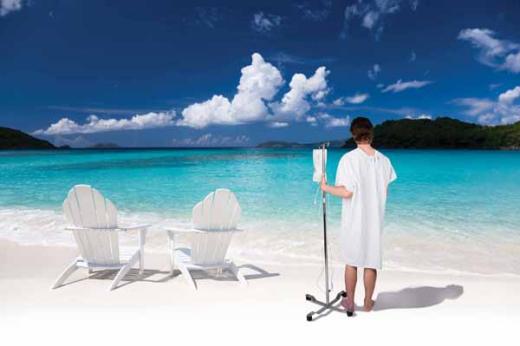By Chuck Bolotin for Next Avenue :
In his Ajijic area office in Mexico, neurosurgeon Dr. Gabriel Varela listened to me patiently and without interruption for 10 minutes as I went on and on about my shoulder and arm pain. After he was sure I’d finished, Varela smiled reassuringly and waited a beat. Then, with much greater efficiency of language than I had just displayed, he summarized the situation: “You’ve reached the age of ‘Nuncas.’”
Varela explained that “nunca” is Spanish for “never” and that “Nuncas” were people about my age (59) who say to doctors that they nunca (never) had the problem they have now or it nunca bothered them before or it nunca took so long to heal. Pivoting to my specific issue, he ordered an MRI of my cervical spine, a nerve conduction study and three X-rays.
So, there it was. I was a Nunca. I flashed back to my European-born grandfather telling me when I was a child that we all tend to experience more health care issues when we get older. Fifty years later, a Mexican doctor was telling me the same thing as Grandpa but using Spanish nomenclature and applying it to me. I guess it’s universal.
The question going forward for all of us Nuncas is how best to deal with needing more health care than when we were younger. As for my health care, I’m extremely relieved and grateful to be entering my Nunca years while living in Mexico (and would feel the same way in other parts of Latin America), as opposed to the U.S. Here’s why:
Lower Health Care Costs
The U.S. health insurance policy I cancelled when we left the states about a year ago covered my healthy wife and me with a $10,000 annual deductible. The premium was scheduled to initially increase to over $600 per month and would skyrocket to well over $1,000 per month by now. In Mexico, my slightly better insurance, including coverage that extends to visits in the U.S., is about $200 per month. That extra $800 per month in my bank account is a nice lifestyle boost, especially in Mexico.
Then, there are the out-of-pocket costs.
Expats in Panama contributing to my website, Best Places in the World to Retire, say the cost for health care in Panama is significantly less than in the U.S. I found the same thing in Mexico.
The visit to my neurosurgeon cost me $40, the MRI was $200, the nerve conduction study was $100 and X-rays were $15 each. My general practitioner in Mexico charges $15 per visit, my podiatrist charges $12.50 for a one-hour session, my physical therapist charges $25 per hourly session and my teeth cleanings in an extremely modern office cost $25 each.
These prices are not co-pays. They’re the actual total out-of-pocket costs without involving an insurance company. I just walk in, get seen, hand over some pesos and that’s it. I don’t bother filing with an insurer and don’t even put the fees on a credit card.
Lane Simmons, an American expat living in the popular expat destination of San Miguel de Allende, Mexico told me a story about the health care he received that convinced him to move to Mexico.
His wife slipped in Mexico and needed surgery that Simmons figured would cost about $30,000 in the U.S. He didn’t have that kind of money and told the Mexican orthopedic surgeon (who was trained in the U.S. at Tulane University) that he’d put it off, but the surgeon wouldn’t allow it. The doctor worked out a deal with the hospital, the anesthesiologist and the neurosurgeon. Simmons just needed to drop off $500 a month for the next 10 months to the restaurant owned by the orthopedist’s mother. He did and decided right then to stay in Mexico.
Click here for full article: forbes.com
Source: Forbes


